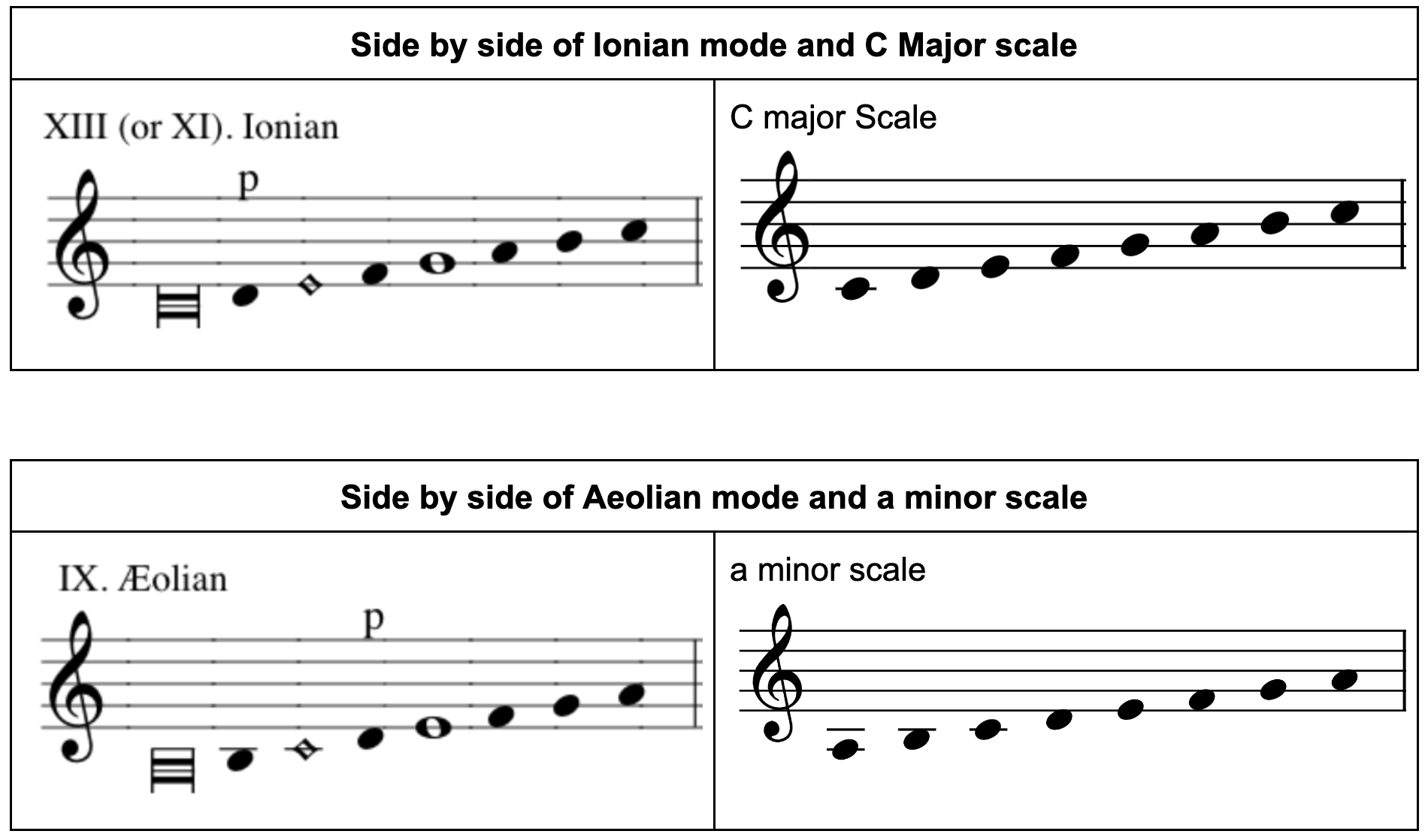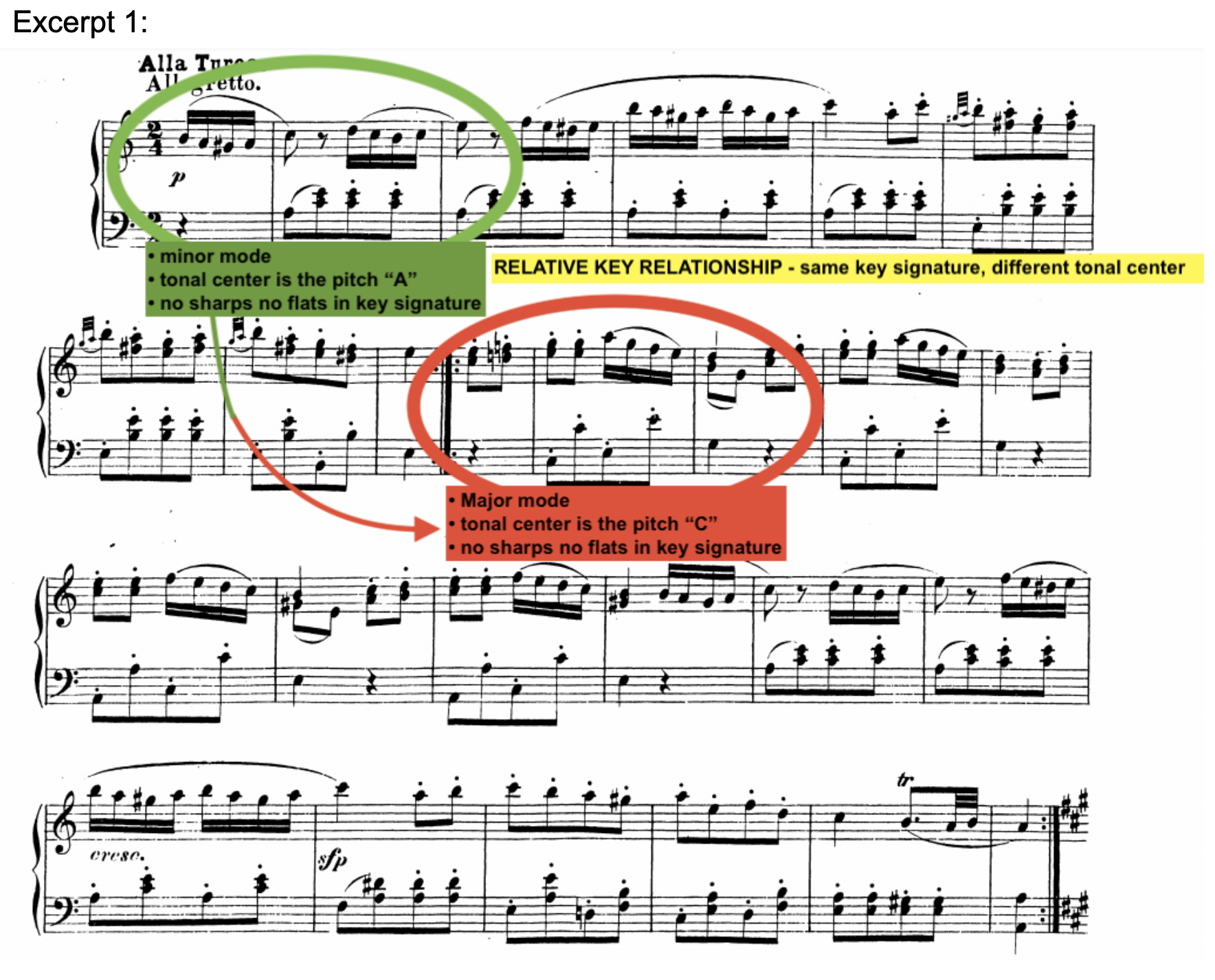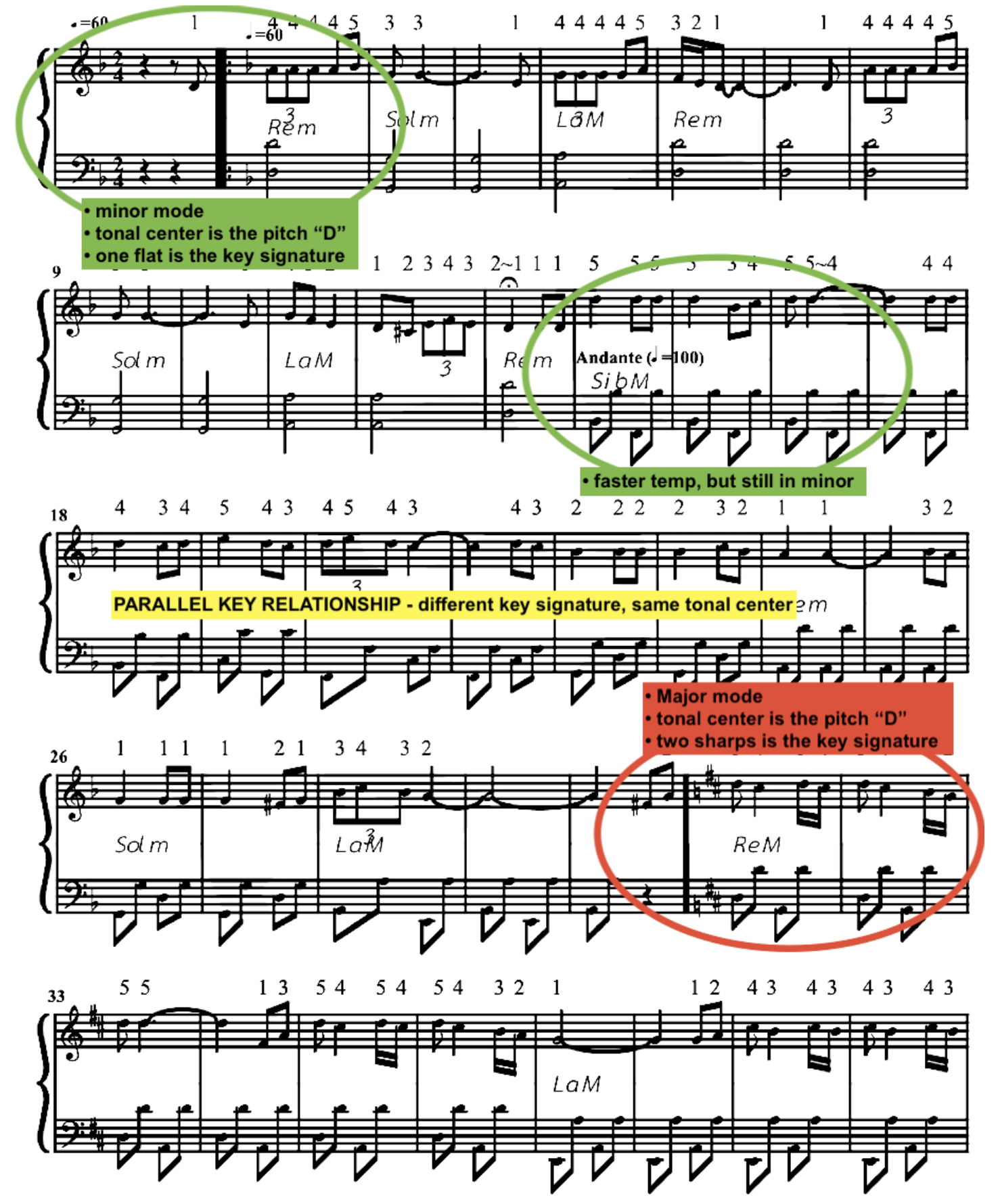5. The Circle of Fifths
The solfege syllables that we use for the major scale contain both harmonic and melodic information. On one side, each syllable and scale degree coincide with an accompanying triad that has a specific function in harmony. On the other side, the syllables indicate the distance from one another. In the case of the major scale, the order of the syllables indicates that the major scale consists almost entirely of whole steps. The exceptions are the transitions Mi-Fa and Ti-Do which are both adjacent pitches separated only by a half-step.
Thus we can make a safe rule that a major scale will always follow the pattern of WWHWWWH, where W = a whole step and H = a half-step.
The major scale and its associated minor mode have become the most popular modes in music that have ties to European functional harmony. This popularity, however, has not always been the case. The major scale and the minor scale are remnants of music that was being created more than 1,000 years ago.
In the European medieval age, churches and monasteries pioneered chant music known as Gregorian chant. Gregorian Chant used a variety of whole step/half-step configurations known as church modes. Church modes varied both in whole step/half-step configuration and also in what became known as the “final” pitch that would begin and end a chant. The “final” would eventually evolve to become the “tonal center” as functional harmony began to be more entrenched in music. The melodic/vocal range parameters for each scale also varied depending on the mode, and it was not necessarily limited to one octave.
12th century abbess, philosopher, writer, polymath, and church composer Hildegard von Bingen has been recently recognized as one of the most influential composers (among other disciplines!) of monophonic chant during the medieval ages. The chant titled “O vis aeternitatis” is an example of a melody that follows a phrygian mode and extends beyond one octave. The “final” pitch is an “E”, but the melodic voice does on occasion reach the “D” just below, and the highest pitch is a “G” ten scale degrees above the “final”.
HILDEGARD VON BINGEN “O vis aeternitatis” (phrygian mode)
The two most popular scales that are heard in Western music now, the major scale and the minor scale, can be linked directly to the Aeolian mode and the Ionan mode from church modes during the medieval ages.
Once the Major scale and the minor scale began to dominate European music during the 17th century, music theorists developed a system that organized each major scale that started on every pitch present in the 12 tone chromatic scale. Key signatures are used to indicate which pitch should be raised (# sign) or lowered (b sign) in comparison to the neutral C Major scale. The resulting diagram has come to be known as The Circle of Fifths.
The circle of fifths has various organizational purposes. The two most important are:
MELODIC PATTERNS. To organize the whole step/half-step pattern of the major scale and minor scale on every single pitch possible within the 12-tone chromatic scale.
HARMONIC TRIADS. To quickly identify the three most important triads in functional harmony: a) the Tonic, b) the Pre-dominant, and c) the Dominant.
The three harmonic triads highlighted in the Circle of Fifths are known as the primary triads. When grouped together, these triads can build the strongest sense of tonality. The primary triads double as harmonic function and also as closely related keys. Key signatures that are adjacent to each other are closely related because they differ only by one pitch. The most smooth modulation into a new key occurs through the shift of tonal center into one of the closely related keys. In the example shown below, the two closely related keys to Bb Major are F Major and Eb Major. Bb Major and F Major share the same pitches, with the exception of E/Eb. Bb Major and Eb Major also share the same pitches, but this time with the exception of A/Ab.
The Circle of Fifths also allows for the organization of minor scales and relative key relationships. The inside of the Circle of Fifths (the smaller pie slices), identifies the minor scale that shares the same key signature as the major scale on the outside of the Circle of Fifths.
The relationship between major key signatures and minor key signatures can be explored in two contrasting manners. thought of in two ways.
RELATIVE KEY RELATIONSHIP. A relative key relationship means that the minor scale shares the same key signature or the same pitches as the major scale. The starting note/tonal center, however, will be different. This is the relationship featured in the Circle of Fifths between the small pie slices and the large pie slices.
PARALLEL KEY RELATIONSHIP. A parallel key relationship shares the same tonal center (same starting note of the scale), but in doing so requires an adjustment of three pitches in order to maintain the half step/whole step pattern that would create the minor scale. The scale below is c minor, and shares a tonal center with C major. However, the 3rd, 6th and 7th scale degrees have been lowered to create the whole step/half-step pattern that creates a minor mode.
Some contrasting musical examples of relative and parallel key relationships are presented below.
WOLFGANG AMADEUS MOZART Rondo Alla Turca
CASTELLANO “El Toro y La Luna” performed by Amalia Rodrigues.
The Circle of Fifths gives musicians a ton of information regarding scale structure, modal and key relationships, as well as harmonic structures. It is a tool that all musicians should memorize and use as a reference guide in order to more easily understand the music around them.












